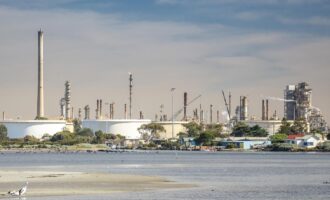2067: The Future of Lubrication
By Aaron Stone
To say lubrication is important is an understatement. The role of lubrication in reducing friction, cooling, minimising wear, improving efficiency and avoiding unplanned downtime is as critical as the design or componentry of any machinery. Ask any lubricant manufacturer or marketer and they will confirm the vital role of tribology, as an enabling technology, in using our resources efficiently.
However, if you ask the same individuals what lubrication will look like in 50 years you are unlikely to receive such a definitive answer. We are experiencing extremely rapid technological development and very few would be brave enough to predict imminent change — let alone what the next 50 years may bring.
Professor Roland Larsson from the Division of Machine Elements at Luleå University of Technology in Sweden has, somewhat boldly, predicted the future of lubrication. Speaking at the 6th World Tribology Congress in Beijing in September 2017, Larsson considered forthcoming challenges and prophesied lubrication solutions during his presentation ‘Lubrication over the next 50 years.’
How could anyone possibly understand where lubricant technology will be in half a century? Before you jump up and down in dismay or dismiss such foresight out-of-hand, Larsson is quick to concede predicting the next 50 years with any certainty is near impossible. He says it is a perspective based on history and trends, personal views, knowledge, plus a healthy dose of speculation.
Larsson believes tribological development will follow two main directions — one of high performance and the other smarter tribology. He suggests, a traditional, high-performance path will enable further improvements in friction control and wear reduction, while the smarter path refers to how tribology supports and makes use of digital developments.
During his presentation, he highlighted several key developments. Lubricants will be made from renewable sources, complete system optimisation will be required for entirely new lubricants, an increasing dependence on computational tribology, and the growing role of tribo-modelling in a suite of virtual product development tools.
The suggestion that lubricants will be formulated from renewable sources is apparent. A 2016 Living Planet Report suggests we are consuming 60% more than our planet can produce, draining the world of valuable assets. A shift to a more sustainable world is imperative to conserve natural resources. According to the International Energy Agency, we use 135 tonnes of crude oil per second. While most countries are already actively moving to reduce the burning of petroleum, Larsson also emphasises the need to reduce usage of petroleum to zero as soon as possible to “avoid a catastrophic change of climate.”
 The implication for lubrication is the development of new base fluids made from renewable, biodegradable, non-toxic compounds. Larsson suggests tribologists are likely to focus their efforts on four elements: nitrogen, oxygen, carbon and hydrogen. The challenge is finding products that have similar or better properties than today’s petroleum-based fluids, are cost-effective, and can be supplied in the required volumes. The current lubricant requirement is more than 40 million tonnes annually.
The implication for lubrication is the development of new base fluids made from renewable, biodegradable, non-toxic compounds. Larsson suggests tribologists are likely to focus their efforts on four elements: nitrogen, oxygen, carbon and hydrogen. The challenge is finding products that have similar or better properties than today’s petroleum-based fluids, are cost-effective, and can be supplied in the required volumes. The current lubricant requirement is more than 40 million tonnes annually.
During his presentation, Larsson predicted an increase in the use of fluids of natural origin, such as vegetable oils and synthetic esters. Though, direct competition with food production, a market two to three times bigger than the lubricant market and higher pricing, could influence growth. Larsson proposed glycerol as a potential lubricant base fluid alternative. It is relatively inexpensive, non-toxic, has decent performance in terms of friction and can be tuned to viscosities in the range of 10-1000 mPas.
In the future it may be difficult to find base fluid candidates with a performance that exceeds today’s best alternatives, concedes Larsson. Reductions in friction and wear will instead be the result of optimising the entire system including base fluids, additives, surface materials and surface roughness. Such optimisation is a significant tribo challenge and will require improved tribological models and simulation tools, says Larsson.
Computational tribology will play an increasingly significant role over the next few decades because “we will create some kind of virtual test benches for future tribological systems.” A shift to greater autonomy, such as with self-driving vehicles, necessitates this change as it reduces the feedback loop to manufacturers.
Larsson believes tribo-sensing will ‘take off’ in coming years as scientists strive to develop methods to sense lubrication conditions, both directly and indirectly. Sensor indications, alongside tribo-models, will support tribo-condition monitoring and actuation, allowing tribologists to compute remaining useful life, the need for service and potentially presenting an ability to correct the system and restore optimal operating conditions.
The Luleå University of Technology professor indicates some progress has been made in wear prediction of hydraulic motors and they are “pretty satisfied” with the accuracy of forecasts. Used alongside historical speed and temperature data the ability to continuously monitor remaining useful life is not far off.
Models will become increasingly important as prognostic tools in tribo-control systems. Larsson suggests scientists must focus on the development of multiphysics models for tribology to be incorporated into virtual product development tools. “Models from the design phase can be integrated into the operational phase to predict the RUL and efficiency under operation.” Further, he suggests the use of true operational data will aid in the continuous improvement of design models.
No doubt, over the next half-century, far more technological achievements will be required, and these must be based on scientific breakthroughs. Larsson believes engineers and scientists are only at the beginning of their golden era!







